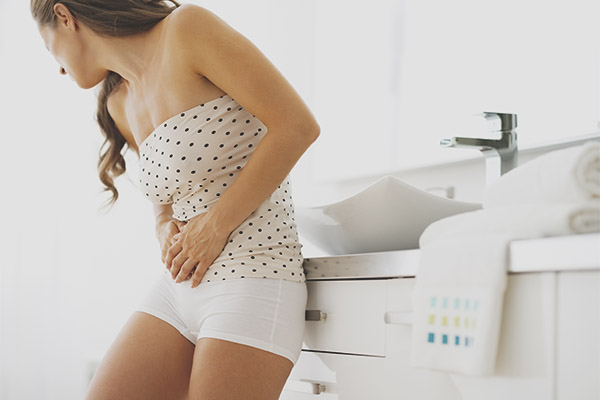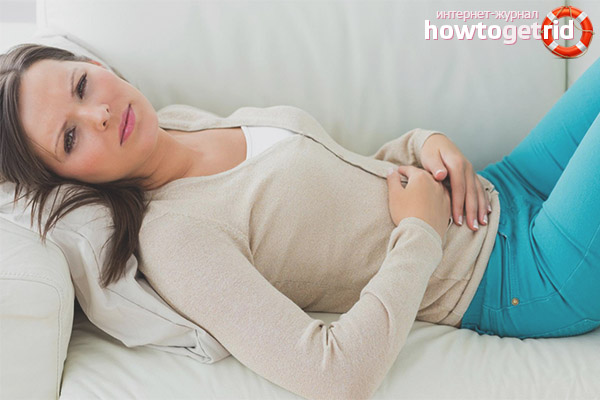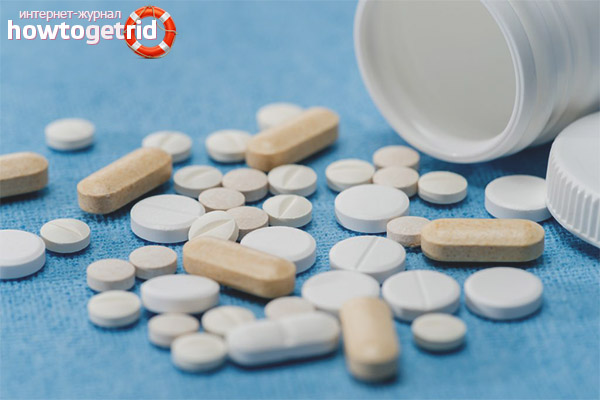The content of the article
The concept of dysmenorrhea is associated with painful menstruation syndrome. With her, a woman is concerned about pain in the lower abdomen. The intensity of the pain may be very different. More than two thirds of women experience moderate pain. But the share of 10% of all cases, there are severe pain.
Symptom Characteristics
The main symptom is associated with the presence of pain. They precede the onset of menstruation and occur 10-12 hours before their appearance. They are most pronounced in the first days. Then the intensity gradually begins to subside. How much pain will be - depends on the age of the woman and the presence or absence of comorbidities. But pain is not the only manifestation of dysmenorrhea.It is characterized by the presence of other manifestations:
- Manifestations of the digestive tract. It's about nausea and vomiting. Similar phenomena are observed in about 84% of all the fair sex.
- Diarrhea accompanies a woman in 80% of all cases.
- Statistics show that about a quarter of all women are accompanied by dizziness.
- Statistical data regarding fainting and headaches are distributed almost equally. They account for 14% and 15%, respectively.
The woman suffers from dysmenorrhea and emotionally. With depressed consciousness, any woman expects a period of menstruation. By the nature of pain during menstruation can be very different and depend on the individual characteristics of each woman individually. Pain can be observed in the place where the bladder, ovaries, intestines are projected. Observed pain in the lumbar region. It may have the nature of contractions or manifest itself in another way.
Characteristic degrees of dysmenorrhea
The division is purely conditional.In this regard, the following degrees of menstrual pain are distinguished:
- Mild degree The most innocuous option, because in no way affects the degree of activity and work capacity of women. Such pains are tolerated quite easily and do not require correction with the use of painkillers.
- Medium severity. There are moderate pains. They are manifested against the background of general weakness, nausea, and depressive state. A woman simply does not tolerate sharp odors. The urination becomes frequent. Hyperacussion phenomena (excessive reaction to sounds) may join.
- Manifestations of severe. The pain takes on an intolerable character. It is localized in the lower abdomen. The manifestations of tachycardia become apparent. The general condition of the woman suffers, up to a pronounced loss of strength. Able to join chills and the development of fainting.
Types of disease
Dysmenorrhea can be primary and secondary in nature. The first option is observed in those girls who have never given birth in their lives. If the birth has already taken place, then talk about the occurrence of secondary dysmenorrhea.
Characteristics of the primary type of the disease
It can exist in two forms:
Adrenergic dysmenorrhea. This type is characterized by frequent constipation and unbearable headache. The temperature may rise, sleep is disturbed, heart palpitations occur. Objective signs can also be noted. The skin becomes bluish tint. This condition is due to vasospasm.
Parasympathetic dysmenorrhea. Body temperature drops, nausea and vomiting appear. Bradycardia may occur, allergic reactions may develop, diarrhea may join. The face becomes puffy, the limbs swell. A woman can even put on weight.
At the heart of both types is a failure that occurred in the hormonal background. In the first version, the first violin is played by adrenaline, norepinephrine and dopamine, in the second case the palm belongs to serotonin. Primary dysmenorrhea should not be considered as an independent disease. It is only a manifestation of the main diseases. These include the following pathology:
- Diseases of the connective tissue of congenital nature.More than half of all cases are associated with genetic dysplasia of connective tissue structures. Painful menstruation is not the only symptom. The condition may be accompanied by scoliosis, flat-footedness, myopia. There may be varicose veins and malfunctioning of the digestive tract. In adolescence, people with this condition have flexible joints, elongated limbs. Blood biochemistry is able to detect magnesium deficiency.
- Pathology of a nervous nature and diseases associated with it. If a girl suffers from neurosis, then her pain may increase. The pain arising from menstruation in such persons is more intense.
- The presence of uterine bend, congenital malformations of the organ or a symptom of the "child uterus". With this pathology impaired blood flow. The uterus, trying to be cleansed of blood, is forced to contract more often, and this, in turn, becomes the cause of intense pain.
It should be noted that primary dysmenorrhea, associated with congenital abnormalities, is quite difficult to therapeutic correction. Often, after a woman gives birth, pain and pain go away.After the birth of the child, there is no longer that intensity of pain during uterine contraction.
Secondary dysmenorrhea
It usually occurs in women older than 30 years. In another embodiment, the pain may occur after childbirth. For this type of more typical form of moderate severity. Because of this, a woman’s ability to work can be impaired. In addition to pain, the following symptoms occur:
- Disorders of the autonomic nervous system, manifested by flatulence, nausea, hiccups.
- Vegeto-vascular disorders in the form of dizziness, headaches, numbness in the legs, loss of consciousness. Often joined by heart palpitations.
- Psychoneurological symptoms. It is manifested by irritability, the development of depressive states. The function of olfactory and taste receptors may be impaired.
- Endocrine Disorders. They are expressed in weakness, joint pain, skin itching
Discomfort woman pursue constantly. She tests them even while having sex. In this case, without delay, it is necessary to conduct a comprehensive comprehensive survey.
Important! If during sex a woman has pain, then this is a reason to immediately consult a gynecologist for advice.
Causes of secondary dysmenorrhea are acquired diseases. Among them are the following pathologies:
- Infectious process, the presence of inflammatory and adhesive changes.
- Uterine Oncology is malignant and benign in nature.
- Varicose veins of the pelvic organs.
- Conditions associated with endometriosis.
- Neuralgia of the pelvic nerves.
The following factors may be provoking agents:
- Abortion operations, implantation of a contraceptive spiral.
- Complicated childbirth performed with caesarean section.
- Non-observance of regime moments, frequent overwork, stressful situations.
Treatment
All activities begin with a diagnosis. The gynecologist deals with the correction of these conditions. To him and should appeal to a woman. Important in the diagnosis of such conditions is the ultrasound examination of the uterus and bladder. It is possible that consultation of the psychoneurologist and a number of other narrow specialists will be required.Treatment of secondary dysmenorrhea is conducted in parallel with the correction of the underlying disease.
Drug therapy
When primary dysmenorrhea carry out the appointment of hormonal contraceptives. With their help, you can reduce the prostaglandins. At the same time, the symptoms of dysmenorrhea are reduced.
With pain struggling with antispasmodics. Showing destination:
- drotaverine hydrochloride;
- papaverine.
With the help of these drugs, the smooth muscles of the uterus relaxes and the intensity of pain decreases. Antispasmodic drugs are prescribed in combination with analgesics. It would be appropriate appointment:
- baralgin;
- spazgana;
- tempalgin.
Folk methods
Do not forget about the means of traditional medicine. A good helper in such states will be peppermint, raspberry leaf, chamomile, ginger root, which can be brewed and consumed as tea. It is shown the use of infusions of soothing herbs such as valerian and motherwort.
You can use alternative ways.This includes a hot dry compress, a heater on the abdomen, the use of contrast baths. This will help eliminate cramps. You can take warm baths with aromatic oils. Swimming lessons are useful. This sport contributes to the development of endorphins, which have an analgesic effect.
Prevention
Preventive measures are associated with the observance of regime points, correction of nutrition, physical education and sports. From the diet should be excluded foods high in caffeine, limit salt intake.
Video: pain during menstruation - what to do?












To send